In Melbourne there was a nursing home which was the premier residence for holocaust survivors. The home understood their issues, these people who feared their nightmares: not the ones they had but the ones they had lived through. They feared the sound of train whistles and as dementia took some of them, they feared the sound of train whistles no one else could hear. And they feared the trains that would eventually take them back to that place they never fully escaped.
Increasingly, the scars were passed to those who cared for those who had been there. Psychological scars, unlike physical ones, are often infectious.
For those who had been there, the Post-War Era never came. Not that the rest of the world segued into it after victory. The general public didn’t know about the holocaust until 1945. It was put on them full force all at once and only when it was all over. 1945 was also the year when the general public learned about the atomic bomb. At the time, pictures weren’t sent over the wires, so the headlines came and a day or two later came the pictures. Those pictures turned the War into the Post-War Era. But of course, it had less impact on the people who were actually there.
Seventeen years after those headlines, a Jewish man once named Stanley Martin Lieber introduced a new superhero based on the Nordic Pagan deity, Thor. Since they couldn’t trademark “Thor” they trademarked “Mighty Thor.” He gave the job of art for that 83rd issue of Journey into Mystery to another Jewish man formerly known as Jacob Kurtzberg.
Stan Lee has written that he created Thor because he saw someone on television call comic books the new mythology. Lee got on the idea that the only way to top what he’d done so far was to create not a superhero but a super-god. However, it has also been said part of the consideration was the need for someone who could beat the Hulk. Stan Lee himself has said he considered using Hercules, but thought that Thor would be a better choice because people were not as familiar with that mythology. However, at the time there was a children’s cartoon called The Mighty Hercules which may have inspired Stan Lee in what not to do.
So when the Mighty Thor came out he pretty well had only his name and a hammer in common with the Thor of myth. The Mighty Thor of comics started as Dr Donald Blake, who back then was a real person. Dr Blake decides to go to Norway for a vacation. As lame people do, he goes without a cane to a mountainous region in a suit and enters a wide, bright cave with a flat floor.
Here a boulder happens to fall into place to block the wide, evenly spaced entryway. Dr. Donald Blake happens to hit the cane on the ground and turn into the Mighty Thor. He reads the side of the hammer the cane has turned into and discovers, “Whosoever holds this hammer, if he be worthy, shall possess the power of Thor.” Dr. Blake is worthy, and immediately puts his new powers to use to stop the stone men of Saturn.
His language is modern English in modern idiom. The “get thee gone,” “odds blood,” and “this is passing most strange” come later.
Before this appearance, Thor was a god with centuries of history. As Christianity converted the Pagan kings and the peasants were ordered to follow along, the Germanic Pagans rallied behind Thor. As Thor became more popular, myths were told that he was even older than his father, Odin.
Jewelry of Thor’s hammer, Mjolnir, was common. One enterprising jeweler created a cast and plug. Put the plug in and the cast made Mjolnir, take the plug out and it made the Christian cross.
Some academics suggest the symbol of Thor’s hammer was the swastika.
In the early twentieth century the swastika became popular as a good luck charm throughout Europe. Pilots, in particular, took to using it. But in the 1920s it again became part of Germanic Paganism. That was being revived and one of the more popular gods for revival was Thor.
The Thor of myth was a redhead. His eyes are sometimes described as flashing or as blazing but I have not found any ancient description of them as blue. It is likely they are, but for all we know, they could have been green. Or writers may have never known or even cared what color his eyes were supposed to be. However, it was clear that Thor in myth has a full beard and mustache.
By contrast, the Mighty Thor of comics is a clean-shaven, blond-haired, blue eyed man. Lee and Kirby made Thor more of a Germanic poster boy than the original. Why would they do that?
In comic-book terms it made sense. Red hair is associated with Celts (look at Dum Dum Dugan). To make sure Mighty Thor was associated with his Norse origin, it was easiest if he was blond. But as we will see later, there may have been another reason. Still, the changes didn’t stop there.
For example, the Mjolnir of myth was not made of Uru. That was a term made up by Larry Lieber because he thought it sounded cool. He was right, it sounds cool. But the original material forged by the dwarves was gold. Those dwarves put a ring at the base of the hammer that Thor could use to whirl it over his head and then throw it at his enemies, which is how real war hammers were used.
There was no leather added to the handle of the Mjolnir of myth. And let’s not forget, the leather on the comic-book Mjolnir must be as indestructible as uru itself. So it must be leather from dragon hide or something, they just haven’t made a story out of it.
The original hammer was, by some descriptions, red hot. The name Thor comes from proto-Germanic “thunor,” meaning thunder. So the god of thunder was named thunder. His hammer seems to have been named lightning, but linguists aren’t certain about that one. In other words, look at a tree that has been hit by lightning, whatever weapon split it into pieces returned to the thrower’s hand.
Both hammers, when thrown, will return. But the comic-book version’s force can be mitigated to whatever the story requires. In myth after myth, the mythical redhead Thor just uses the hammer to smash things to pieces.
The mythical Thor had to wear a pair of metal gloves to control Mjollnir. The mythical Thor also had a magical belt that doubled his strength. The gloves and belt are sometimes pulled out for comic stories, but only very rarely.
Would they be too cumbersome for comic-book stories? Hardly. You can draw metal gloves if you can draw Iron Man’s whole suit of armor. You can draw a magical belt of strength if you can draw all those other belts. Instead, Lee wasn’t telling us a story about a guy with magical solutions.
Mighty Thor of the comic books flies. The explanation is Thor spins his hammer, throws it, then grabs hold of that strong-as-Uru leather strap and is pulled along. By contrast, the Thor of myth never uses his hammer to travel. He rides in a cart pulled by two goats. The goats are named Toothgnasher and Toothgrinder.
The cart can apparently take him anywhere in the nine realms. It is clearly shown in different stories traveling on Earth, in Asgard, and Jotunheim. So in that the cart has the same range as the hammer. On the other hand, if Thor gets hungry, he kills the goats and eats them. With some magic words he brings the goats back to life, flesh and all. So they are a permanent source of food.
It’s easy to see why Lee and Kirby got rid of the cart and the two goats. First of all, drawing Thor getting into the cart, out of the cart, and finding a place to park it would all slow down the story. Compare Captain America who, without any super power to travel, still gets from one side of New York to the other without taking public transport.
Also, the cart wasn’t well known to their reading public, so it would have to be explained, which once again slows down the story. So the cart was dumped and, once again, the focus was put on Mighty Thor.
The Thor of myth had a dimension that just doesn’t suit a superhero. The mythical Thor hallowed: that is, he made holy, he sanctified things. That is not part of superhero comics, so there was never a chance that would be kept for any time at all.
The Thor of myth is gigantic, nearly the size of an ice giant. Sometimes, Loki would travel with him by hooking himself to Thor’s belt. When Thor has to dress as a woman to be taken as “bride” to a giant who has his hammer, the giants remark how big this bride is.
And note there’s no “only the worthy” can lift the hammer thing, here. It can be stolen, giants can carry it and they put it in the lap of the bride who rips off her dress and kills them all (no mention of the gloves, by the way).
The Thor of myth kills a lot of people, giants, monsters, and pretty well anything else that gets in the way of his temper. But in the less violent modern world, under the then-aegis of the Comics Code Authority, the Mighty Thor doesn’t kill. Of course Stan Lee changed that first off, he wasn’t stupid (he still isn’t but that’s another article).
But the Thor of myth is also the object of comedy. He has to dress like a bride with a veil and everything. He has a piece of flint in his forehead, a reminder of a fight he had with a giant when hammer and whetstone collided. But in comic books the dress and the stone would be worse than useless. Because comic books were already out there, comedy like that would swallow the whole series. Pulling back from farce was essential.
Once Thor was on the comic pages, he dragged other members of Norse myth with him, starting with Loki. Loki in the comics was always Thor’s brother, adopted or not. In myth, Loki was Thor’s uncle by virtue of an unbreakable oath of blood brotherhood he took with Odin.
Of course, mythical Thor’s blonde wife, Sif, was initially dumped and her place was taken by a nurse, Jane Foster. Sif was supposed to be a fertility goddess based on nothing other than she had long blonde hair and when Loki shaved her bald, he had to replace it. That’s her only appearance in myth.
But when the comics started, it was unrequited love and no children for the Mighty Thor. As often happens in fiction, the powerful man is unable to express his feelings to a woman he’s attracted to.
Later there’s a different paradigm. In the movies, Sif is uninterested in romance, she’s concentrating on a career of stabbing people and inanimate robots. From a fertility goddess, Sif has become a goddess of war. So much for Tyr, who was the mythical god of war. And in the movies, Jane Foster is no longer a nurse, she’s a scientist.
The Thor of myth will die at Ragnarok when he kills the Midgard Serpent, Jormungand. The Serpent is a child of Loki, which makes him Thor’s cousin. The Thor of myth will kill the Midgard Serpent and then drown in its venom. So basically it throws up on him and he dies.
Loki of myth is fated to kill and be killed by Heimdall, not Thor. Odin will be swallowed by Fenrir the wolf. Fenrir will have its jaw ripped open by Vidthar, which will of course kill the wolf and in earlier versions of the myth probably allowed Odin to return.
As anyone in Hollywood will tell you, inhuman cousins don’t make good archenemies. Obviously, Lee and Kirby knew that, too, because they made Loki into Mighty Thor’s brother. They concentrated the diffuse story of the mythical Ragnarok. Thor tries to live up to Odin’s word and Loki tries to subvert it. The whole has been reduced to a fundamental basic choice in life, which elevates the meaning of the story.
Thor in myth had little in common with Odin. Odin was the trickster, the clever one, and more like Loki than Thor. Again and again in the myths it’s made clear you can’t trust Odin. Odin the Gray walked the world dressed in a cloak, a broad-rimmed hat, and carrying a staff. He wasn’t imitating Gandalf, Gandalf the Gray imitates Odin. But not in comic books. Odin is armored Allfather and that alone and that’s good enough.
There is one thing which has never been mentioned but is common to the Thor of myth and the Mighty Thor of comics. Thor of myth was a god for farmers, for traders, for the middle class. In the same way, Thor of comic books is a product for the middle class, not the upper class and not the lower class.
So the Mighty Thor was recast for the modern age. Lee and Kirby kept some things, changed others, and made some up off the top of their heads. But the real import of it all was missed, perhaps because the media thought comic books were silly things that children read. The media had Wertham syndrome and would continue to have it until Donner’s Superman the Movie.
These men took a Norse god and made him even more Nordic. They stripped away most of the tools (cart, gloves, belt) and focused the story on Thor. They made Thor a hero measured by the choices he makes while under pressure.
It’s not that they simply brought back a Norse god and made him a hero. It’s that these Jewish men divorced a Norse god from the recent holocaust. It seems they remembered not every German was behind that ideology. Thor was an act of forgiveness from men who changed their own names at a time when disguising their origins had to be a factor. It was an extraordinary thing.
Some never forget and never overcome their scars. It’s a thing relatively few achieve. Lee in writing and Kirby in art refused to allow the scars to infect them. They went further than almost anyone would now, let alone back then. They went further than anyone would have expected of them. So it is that the Mighty Thor was created by men who remembered what has been forgotten in recent political discourse: you can’t point the finger and extend a hand at the same time. Instead, they spoke of becoming a hero. Little wonder there is so much strength in that story.

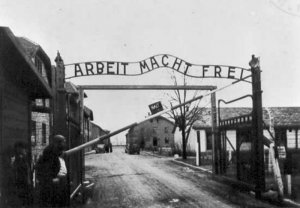
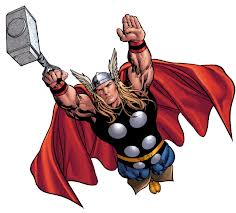
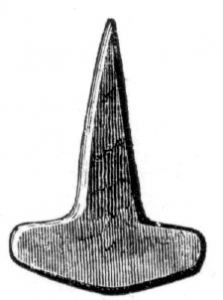
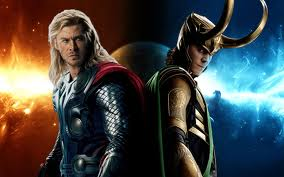
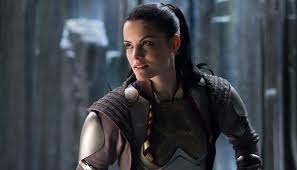

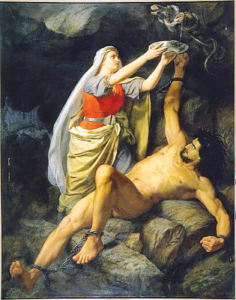
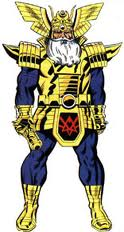
Comments are closed.